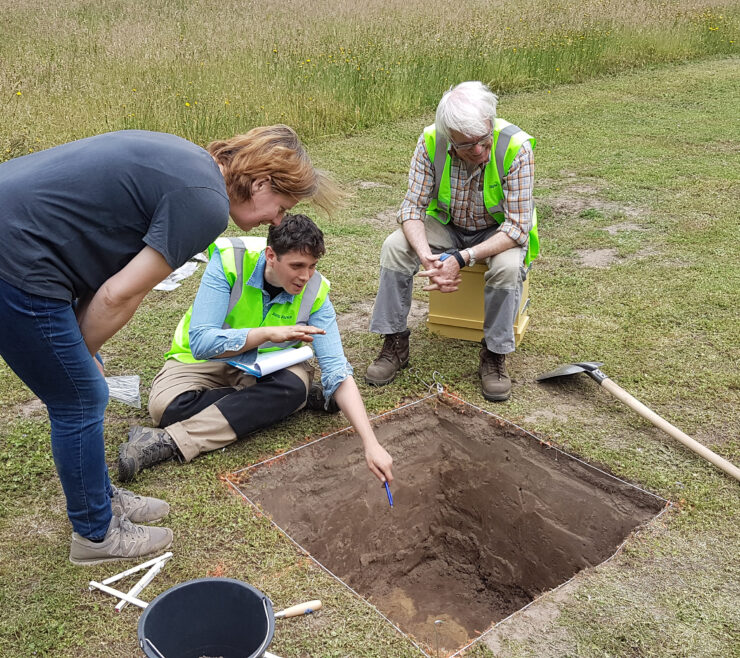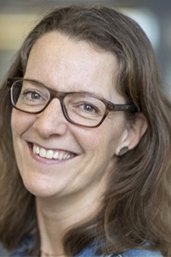‘Heel Heerlen Graaft’: exploring the Roman heritage together with Heerlen residents
An example of citizen science in Limburg

For the first time in the Netherlands, an archaeological research project is being carried out in a city together with residents on a large scale. During Heel Heerlen Graaft, 150 residents will join archaeologists in their search for Roman remains in their own backyard. It is an example of citizen science. Project leader Saskia Stevens: “This study gives Heerlen residents the opportunity to literally dig into their city’s past and get in touch with their own Roman roots.”
Searching for Roman heritage with residents
Dr. Saskia Stevens is assistant professor at the Department of Ancient History and Classical Civilization. She is specialised in the history and archaeology of the Roman Period. Together with academic and social partners, she directs Constructing the Limes, a major research project on the Netherlands in Roman times.

Years of research have yielded a lot of information about the Roman city of Coriovallum, as Heerlen was called in Roman times. Yet many questions still remain unanswered, Stevens says: “There is information buried under streets, houses and gardens that can further contribute to our knowledge about Roman Heerlen. Knowledge that is important for our research project.” During Heel Heerlen Graaft, one-square-metre test pits will be dug in 25 gardens and public spaces to investigate the soil.
“There is hidden information under streets, houses and gardens that can further contribute to our knowledge of Roman Heerlen.”
– Dr. Saskia Stevens
Citizen Science
Involving citizens in science as is done at Heel Heerlen Graaft is called citizen science. Stevens sees the added value of this type of cientific research: “Through citizen science, as a researcher you gain access to local knowledge, on the other hand you create a bond between residents and their own past. That builds ownership and ideally good care for historical heritage.”
“For us as researchers, local knowledge adds to our own, and gives access to local finds and therefore understanding of local history and archaeology. We hope to bring that knowledge back into our larger and wider research. Locals can make connections or ask questions we haven’t yet thought of, which is fun and inspiring. Hopefully it will provide an entry point to a large group of volunteers with whom we can continue to work in the future.”
A source of knowledge about an ancient civilisation
There is still much to discover in Heerlen, according to Stevens: “We are curious to know if and where archaeological remains are present, and what their nature, dating, preservation and value are. This knowledge can further help us gain insight into this important place in the border land of the Lower Germanic Limes.
What’s more, it helps to better protect the Roman heritage and to get a better picture of what Heerlen looked like in Roman times. Where was the urban area, for example? What kind of buildings were there? Where were the cemeteries and what kind of items were used?”
Through citizen science, as a researcher you gain access to local knowledge and create a link between residents and their own history.
– Dr. Saskia Stevens
From kick-off to actual excavation
The kick-off of Heel Heerlen Graaft is on 18 June when the first shovel goes into the ground. Then, on 9 and 10 September during Open Monumentendagen (Heritage Days), the Great Digging Days will take place. Heerlen residents will then get to work in their own gardens under the guidance of an archaeologist.
If it is up to Stevens, Heerlen will certainly not be the last city where research is carried out in this way. “We would also like to roll this out to other Dutch municipalities in the coming years, provided there is funding, of course.”
Digging into the past together
Heel Heerlen Graaft is a citizen science project organised together with the municipality of Heerlen under the banner of Constructing the Limes and funded by NWO and the municipality of Heerlen. It is a collaboration between the municipality of Heerlen, Constructing the Limes, NWO, the Thermenmuseum, Restaura and De Vondst, LGOG and many volunteers.
This item was written by Utrecht University and was published here.
